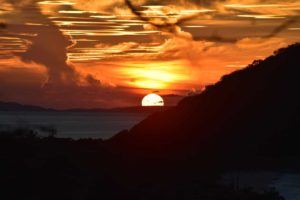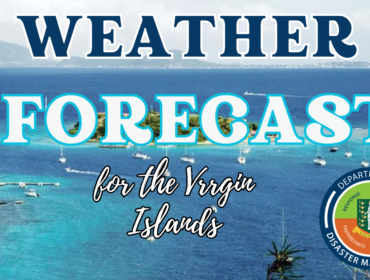The Department
of Disaster Management (DDM) is continuing its efforts to complete geological
maps for the British Virgin Islands which will be used to further support planning
and development processes in the Territory.
The DDM has requested the
assistance of Dr. James Joyce, an Engineering Geologist from the University of
Puerto Rico Mayaguez to develop slope vulnerability maps for some of the
smaller islands of the BVI including Peter Island, Scrub Island, Great Camanoe
and Beef Island.
Dr. Joyce spent the past
week in the BVI collecting essential data on these islands which will be used
to generate new maps for these islands. Data was also collected in Oil Nut Bay, Virgin Gorda
since this area had not previously been mapped and significant construction is
currently occurring there.
Dr. Joyce has
studied the geology of the Virgin Islands for over 20 years and has worked on
completing several useful Geology datasets including a Landslide Hazard Map,
Slope Vulnerability Maps for the larger islands of Tortola, Virgin Gorda and
Jost van Dyke and a simplified Bedrock Geology Map of the British Virgin
Islands.
Explaining the
significance of this project Technical Planning Officer, Mr. Christopher
Williams said, “Due to the recent developments taking place on slopes throughout
the Territory and in particular on the smaller islands, it became necessary for
geological assessments to be carried out so that the hazard data available through
the National Geographic Information System (NGIS) can be improved and updated
to better guide planning and development activities.”
Mr. Williams
further explained, “Dr. Joyce completed similar works on Tortola, Virgin Gorda
and Jost van Dyke in 2011 and presented new cut slope ratio maps to building
professionals at a workshop held in August that year. These maps have been used
in the planning and development processes managed by the Town and Country
Planning Department and the Public Works Department to guide the manner in
which slopes are cut and to ensure safer building practices. The maps
are also being widely utilised for research purposes and during the preparation
of environment impact assessment reports.”
Similar data
was collected on Frenchman’s Cay, Norman Island, Cooper Island, Mosquito
Island, Necker Island and Guana Island in 2012 and will now be processed
together with the newly captured data to create slope vulnerability maps for
all of the islands mentioned.
The DDM
currently prepares Hazard Vulnerability Assessment (HVA) reports at minimal
cost to developers. These reports, based on geological mapping and scientific
models, contain high level assessments of hazards, and are used to provide a
better understanding of the hazards that may affect a property. These reports also include the mitigation
measures that can be applied to make development safer as well as to ensure
greater environmental protection.
The new
geology maps are expected to be available in the coming months and will be accessible to members of
the public.
Photo Captions:
- Engineering Geologist Dr.
James Joyce taking dip and strike measurements at Oil Nut Bay as part of
the data collection process. - Engineering Geologist Dr.
James Joyce undertakes visual inspection of cut slope at Oil Nut Bay. - Example of a Slope
Vulnerability Map, similar to what will be created for the smaller islands
of the BVI for which data has recently been collected.



